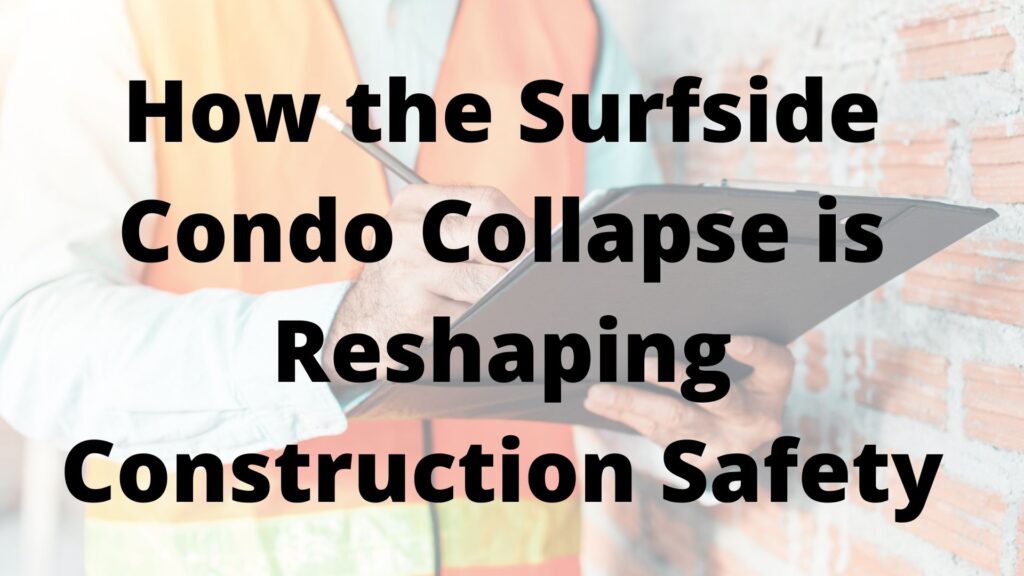
The image remains stark and unforgettable: a mountain of rubble where the Champlain Towers South once stood in Surfside, Florida. The devastating collapse on June 24, 2021, claimed 98 lives and sent shockwaves far beyond the quiet beachfront community. While the immediate aftermath focused on rescue efforts and the agonizing wait for news, the tragedy has since ignited a crucial reckoning within the construction industry, prompting a critical re-evaluation of safety measures and regulatory oversight.
The investigation into the Surfside collapse is still ongoing, but preliminary findings have pointed towards a combination of factors, including long-term structural damage, potential design flaws, and delayed maintenance. This confluence of vulnerabilities laid bare the potential for catastrophic failure, even in seemingly well-established structures. The tragedy served as a stark reminder that vigilance and rigorous safety protocols are not just best practices, but absolute necessities in the complex world of construction and structural engineering.
In the wake of Surfside, the construction industry is undergoing a significant transformation, driven by a renewed focus on prevention and accountability. Several key areas are experiencing notable shifts:
Increased Scrutiny of Existing Buildings: The collapse has triggered widespread inspections of older buildings, particularly those along coastlines susceptible to corrosion from salt air. Local and state authorities are implementing stricter regulations regarding inspection frequency and the scope of these assessments. For example, Miami-Dade County, where Surfside was located, has accelerated its 40-year recertification process, requiring more in-depth structural evaluations and mandating timely repairs. This proactive approach aims to identify and address potential structural issues before they escalate into dangerous situations.
Emphasis on Thorough Structural Evaluations: The investigations highlighted the critical need for comprehensive structural assessments conducted by qualified engineers. This includes not just visual inspections but also non-destructive testing methods like ground-penetrating radar and ultrasonic testing to identify hidden damage within concrete and steel. The industry is seeing a push for standardized protocols and clearer guidelines for these evaluations, ensuring consistency and thoroughness across different jurisdictions.
Enhanced Maintenance and Repair Requirements: Delayed maintenance is believed to have been a significant contributing factor in the Surfside collapse. Consequently, there’s a growing emphasis on establishing clear maintenance schedules and ensuring that necessary repairs are carried out promptly. This includes stricter enforcement of building codes related to maintenance and potential financial mechanisms to ensure that homeowners’ associations and building owners have the resources to address structural concerns without delay.
Advancements in Technology and Monitoring: The tragedy has spurred interest in leveraging technology for continuous structural health monitoring. This includes the use of sensors embedded within buildings to track parameters like stress, strain, and vibration, providing early warnings of potential issues. Building Information Modeling (BIM) is also gaining traction, offering a comprehensive digital representation of a structure throughout its lifecycle, facilitating better design, construction, and maintenance planning.
Increased Accountability and Transparency: The legal and regulatory fallout from the Surfside collapse has underscored the importance of accountability at every stage of a building’s lifecycle, from design and construction to inspection and maintenance. There’s a growing call for greater transparency in inspection reports and clearer lines of responsibility for identifying and addressing structural deficiencies. This may involve stricter licensing requirements for engineers and contractors and more robust enforcement mechanisms.
Focus on Communication and Resident Awareness: The residents of Champlain Towers South were largely unaware of the extent of the structural issues plaguing their building. Moving forward, there’s an increasing recognition of the need for better communication between building management, engineers, and residents regarding the structural health of their buildings. This includes clear and accessible reports on inspections and any necessary repairs.
The Surfside condo collapse was a horrific tragedy that exposed vulnerabilities within the construction industry and its regulatory framework. While the pain of loss remains, the industry is responding with a renewed commitment to safety. The increased scrutiny of existing buildings, the emphasis on thorough structural evaluations, enhanced maintenance requirements, the adoption of advanced technologies, and a greater focus on accountability and transparency are all crucial steps in preventing similar disasters. The lessons learned from Surfside are reshaping how we approach building safety, with the ultimate goal of ensuring the structural integrity and long-term safety of our built environment. The memory of those lost demands nothing less.
 John Caravella Esq., is a construction attorney and formerly practicing project architect at The Law Office of John Caravella, P.C., representing architects, engineers, contractors, subcontractors, and owners in all phases of contract preparation, litigation, and arbitration. He also serves as an arbitrator to the American Arbitration Association Construction Industry Panel. Mr. Caravella can be reached by email: [email protected] or (516)462-7051
John Caravella Esq., is a construction attorney and formerly practicing project architect at The Law Office of John Caravella, P.C., representing architects, engineers, contractors, subcontractors, and owners in all phases of contract preparation, litigation, and arbitration. He also serves as an arbitrator to the American Arbitration Association Construction Industry Panel. Mr. Caravella can be reached by email: [email protected] or (516)462-7051
The information provided on this website does not, and is not intended to, constitute legal advice; instead, all information, content, and materials available on this site are for general informational purposes only. Readers of this website should contact their attorney to obtain advice with respect to any particular legal matter. No reader, user, or browser of this site should act or refrain from acting on the basis of information on this site without first seeking legal advice from counsel in the relevant jurisdiction. Only your individual attorney can provide assurances that the information contained herein – and your interpretation of it – is applicable or appropriate to your particular situation. Use of, and access to, this website or any of the links or resources contained within the site do not create an attorney-client relationship between the reader, user, or browser and website authors, contributors, contributing law firms, or committee members and their respective employers.
